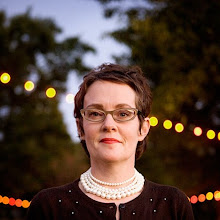
White House ruins, Canyon de Chelly, Navajo Nation, Arizona
Kevin and I went up to Canyon de Chelly last weekend, a dream of mine since I took a history of photography class from Tom Southall at the University of Kansas many moons ago.
His wasn't the only class that described my dreams to me: my class in Greek & Roman art propelled me to Athens one summer, and Marilyn Stockstad's medieval art class drove me to see the Byzantine mosaics in Ravenna, where I spent one New Year's eve, age 21, at a small b & b, sticking my head out of the round window carved out of the one foot thick walls, looking for the fireworks below.
I found my calling sitting in those darkened art history classes, which are a glorious admixture of politics, history and pretty pictures--what more could you want?
This makes me think about the defunding of arts classes in schools. This punitive action (art is too girly? Not enough chances to monetize / control the market? Questions authority?) suggests that the American compulsion to put value on everything devalues all those kids who want to play, sing, dance, write, shoot and look. And as we know, idle hands are the devil's work--it's critical that we allow kids the widest range of experiences so that they become productive, smart citizens. New industries don't erupt only from the sciences, they come from creative innovators in the arts as well.
(I was so distressed in the late 1980s at the idea that a minority of voices could try to excise arts funding (Culture Wars) from our Social Contract (i.e. taxes) that I called Hans Haacke to see if it was possible to do a survey of arts people, give them a list of tax programs their taxes go towards, and allow them to individually reapportion their tax dollars. While it's a great idea, he said, that's a complex sociological / statistical process that was beyond his capacity. Fair enough. Anyone else who wants to do this, break a leg!)
Back to Canyon de Chelly: Of course my photo history class showed me black & white prints, and the Canyon and its people are in living color. Those early photographs of the American West gave face to the myths of the West, myths that washed over the harsh imperialist realities of Manifest Destiny.

Monument Valley, Navajo Nation, Arizona / Utah
What struck me is how our perceptions of the West have changed since the 1970s. The American Indian Movement drew attention to the treatment of indigenous peoples across this continent (and to oppressed indigenous peoples around the globe as well). Writers as diverse as Rebecca Solnit and Tony Hillerman have given us vivid portraits of the First Nations peoples who numbered between 20 and 35 million at first recorded contact (Columbus, not the Vikings). Historians like Patty Limerick and Lawrence Culver (up-coming book "The Frontier of Leisure: Southern California and the Shaping of Modern America") are re-writing these myths of the West, allowing us to re-think how we function as a country.
And at this tipping point in our history--economic collapse, environmental degradation, population explosion--this re-evaluation is critical to remaking the American Dream. And I got there via art history.
What a valuable education.




No comments:
Post a Comment